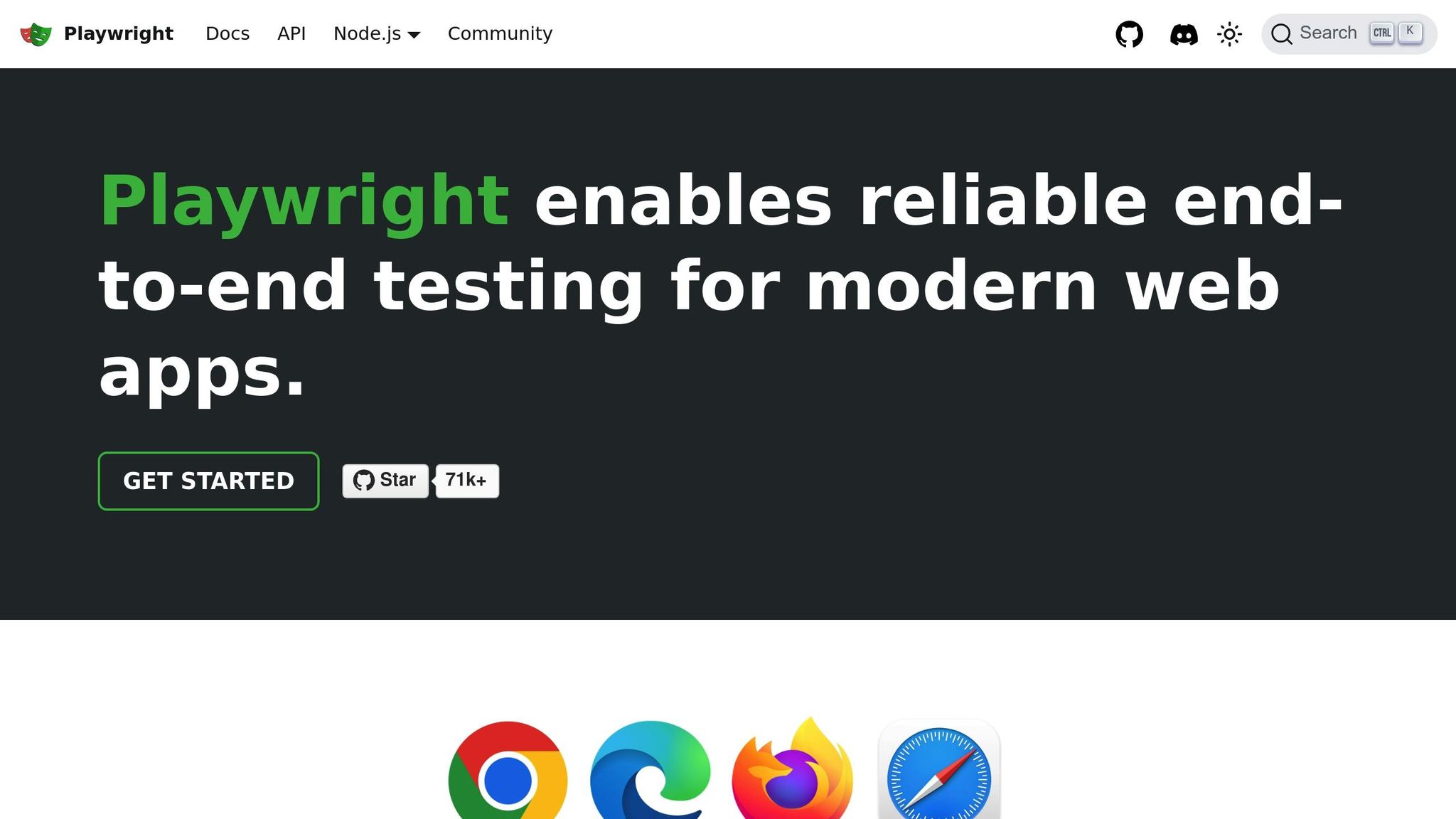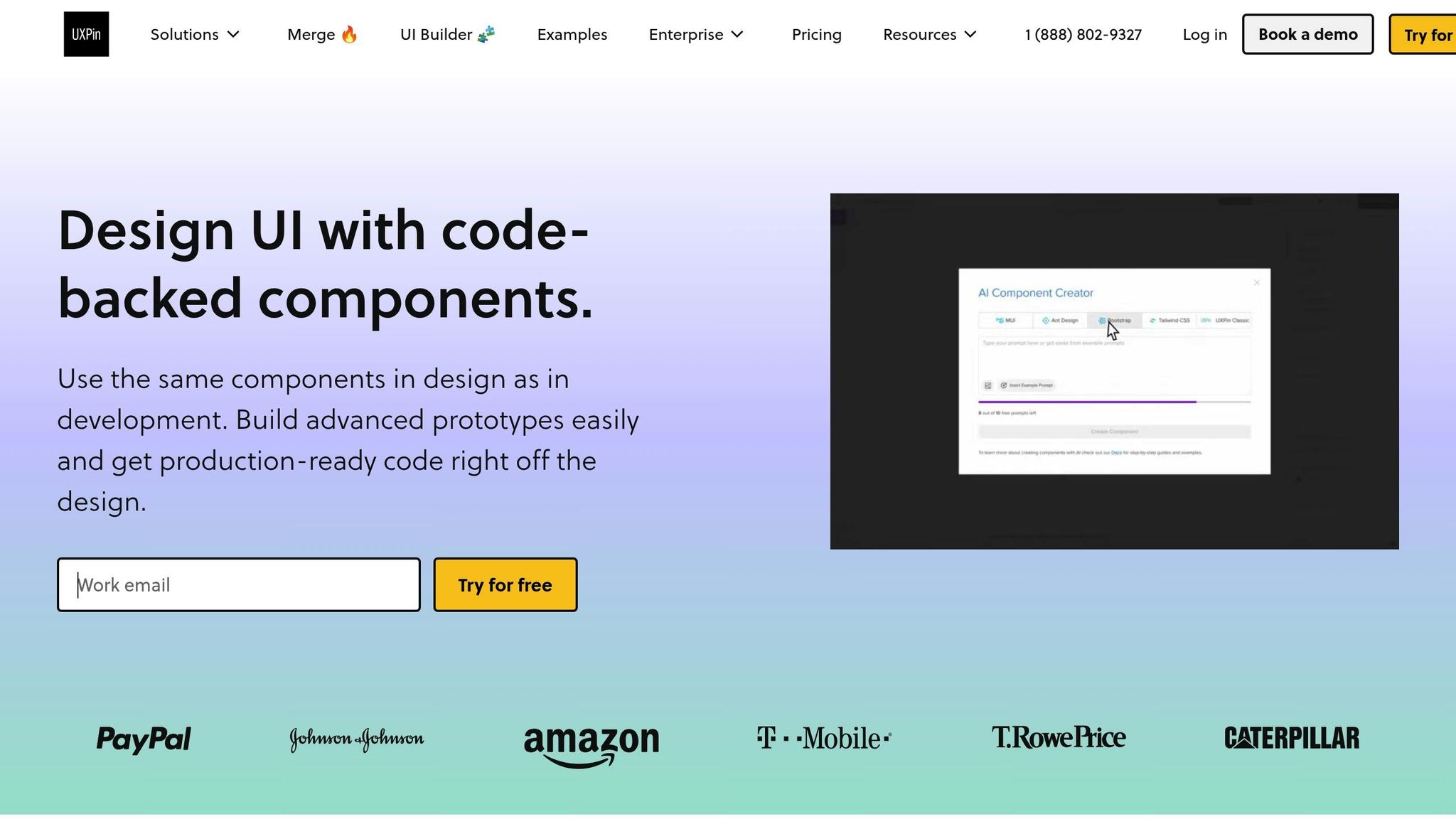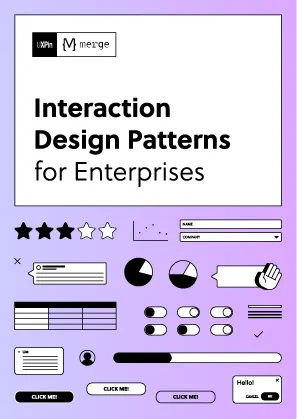AI testing tools are transforming how React components are tested, making the process faster, more accurate, and efficient. By automating repetitive tasks, these tools catch browser compatibility issues, accessibility concerns, and performance bottlenecks early in development. Here’s what you need to know:
- AI Benefits: Automates cross-browser testing, identifies subtle rendering and layout issues, and ensures accessibility compliance.
- Core Methods: Visual regression, behavioral analysis, performance profiling, and accessibility testing.
- Setup Essentials: Use tools like React Testing Library, Jest, and AI-powered plugins to streamline testing workflows.
- Best Practices: Integrate AI testing into CI/CD pipelines and configure tests for Chrome, Firefox, Safari, and Edge.
AI testing not only reduces manual effort but also improves the reliability of React components, ensuring consistent performance across browsers and devices.
AI-Powered Functional Testing with Playwright

AI Testing Fundamentals
Core AI Testing Concepts
AI testing for React components uses machine learning to analyze behavior, visuals, and interactions across different browsers. It focuses on pattern recognition and automated decision-making to identify issues before they reach production. Modern tools leverage computer vision and deep learning to detect visual regressions and validate interactions, complementing traditional unit tests. These principles form the groundwork for applying specific AI testing techniques.
AI Testing Methods
Building on these ideas, several methods ensure thorough validation of components:
| Testing Method | Purpose | Key Benefits |
|---|---|---|
| Visual Regression | Identifies unexpected changes in appearance | Detects subtle layout and styling issues |
| Behavioral Analysis | Monitors interactions and state changes | Ensures consistent functionality across browsers |
| Performance Profiling | Tracks rendering and load times | Highlights areas for optimization |
| Accessibility Testing | Checks WCAG compliance | Promotes inclusive component design |
Together, these methods create a strong testing framework that catches issues traditional approaches might overlook. AI algorithms also improve over time as they learn from new test results, enhancing their accuracy.
AI Testing Advantages
Using these AI methods enhances React component testing, as demonstrated by real-world examples:
"When I used UXPin Merge, our engineering time was reduced by around 50%. Imagine how much money that saves across an enterprise-level organization with dozens of designers and hundreds of engineers." – Larry Sawyer, Lead UX Designer
"As a full stack design team, UXPin Merge is our primary tool when designing user experiences. We have fully integrated our custom-built React Design System and can design with our coded components. It has increased our productivity, quality, and consistency, streamlining our testing of layouts and the developer handoff process." – Brian Demchak, Sr. UX Designer at AAA Digital & Creative Services
Key benefits include:
- Automated detection of cross-browser compatibility issues
- Reduced manual testing effort
- More consistent and dependable test outcomes
- Accelerated development cycles with automated validation
- Earlier identification of potential issues during development
Combining AI-driven testing with traditional methods creates a well-rounded strategy. This approach helps teams deliver more reliable React components while cutting down the time and effort needed for testing.
sbb-itb-f6354c6
Setting Up AI Cross-Browser Tests
Tools and Initial Setup
To get started, you’ll need the following tools:
- Node.js (version 16.0 or higher)
- npm or yarn package manager
- React Testing Library
- Jest test runner
- A modern code editor with testing extensions
First, configure your project’s testing environment by adding the required dependencies to your package.json file:
{ "devDependencies": { "@testing-library/react": "^14.0.0", "@testing-library/jest-dom": "^6.1.0", "jest": "^29.6.0" } } Once that’s done, it’s time to integrate AI testing tools into your setup.
Adding AI Testing Tools
Install the necessary AI testing dependencies and update your test configuration file. Here’s an example jest.config.js file:
module.exports = { testEnvironment: 'jsdom', setupFilesAfterEnv: ['<rootDir>/src/setupTests.js'], moduleNameMapper: { '\\.(css|less|scss)$': 'identity-obj-proxy' }, // Add configurations specific to your chosen AI testing tools }; After setting up the AI tools, you can move on to preparing your cross-browser testing environment.
Configuring Browser Testing
Define the browsers you want to test against in your configuration:
const browsers = [ { name: 'chrome', version: 'latest' }, { name: 'firefox', version: 'latest' }, { name: 'safari', version: 'latest' } ]; Then, create a test runner to execute your tests across these browsers:
async function runCrossBrowserTests() { for (const browser of browsers) { await testComponent({ browserName: browser.name, browserVersion: browser.version // Add any additional AI tool configurations here if needed }); } } Finally, execute your cross-browser tests using the following command:
npm run test:cross-browser Feel free to adjust the configuration to fit your project’s specific needs.
AI Testing Best Practices
Browser Code Compatibility
Use AI tools to spot and fix browser-specific CSS and JavaScript issues. This ensures your application’s rendering, DOM structure, and behavior stay consistent across various browser engines. These tools evaluate rendering patterns and style implementations to make cross-browser functionality more reliable.
AI-Based Layout Testing
AI tools go beyond compatibility checks by improving layout accuracy. They are particularly effective at identifying visual inconsistencies across different screen sizes and browsers. For example, AI-powered layout testing can evaluate how your React components adapt to responsive design by focusing on:
| Testing Aspect | AI Analysis Approach |
|---|---|
| Layout Structure | Assesses component positioning and alignment across viewports |
| Responsive Behavior | Observes how components respond to various screen sizes |
| Visual Consistency | Verifies consistent styling across browsers |
| Component States | Checks states like hover, active, and disabled for accuracy |
Testing in CI/CD
Integrate AI testing into your continuous integration pipeline to maintain quality with every code change. Set up your CI/CD workflow to automatically execute AI-driven tests after each commit:
test: stage: test script: - npm install - npm run test:ai-layout - npm run test:cross-browser artifacts: reports: junit: test-results.xml These AI-powered tests examine both the code structure and visual output of your components. This approach catches problems that traditional testing might overlook, all while keeping your deployment process efficient. Set automatic failure thresholds to ensure only high-quality components are deployed to production.
Next Steps
AI Testing Outlook
AI-driven testing for React components is becoming more precise and efficient. Advances in machine learning have enhanced visual regression testing and component validation. Many testing frameworks now use AI to anticipate cross-browser compatibility issues before they affect users.
Here are some key advancements shaping AI testing for React:
| Advancement | Impact on React Testing |
|---|---|
| Self-healing Tests | Adjusts automatically to minor changes in components |
| Predictive Analysis | Flags potential compatibility problems early |
| Visual Learning | Boosts accuracy in layout comparisons across browsers |
| Performance Optimization | Speeds up test execution and streamlines workflows |
Integrating these AI advancements with a reliable design-to-code platform can maximize their potential.
UXPin Integration Guide

UXPin’s code-backed prototyping tools align seamlessly with AI testing workflows for React components. The platform’s AI Component Creator helps validate component behavior during the design phase, reducing errors early.
With UXPin’s Merge technology, you can connect React components directly to its testing environment. This allows for real-time validation of component states and interactions across different browsers. UXPin also includes pre-configured React libraries – like MUI, Tailwind UI, and Ant Design – enhanced with AI-driven testing features.
For enterprise teams, UXPin supports cross-browser testing through CI/CD pipelines. Its version control system tracks component changes, simplifying the process of fixing compatibility issues.
To set up your testing workflow:
- Enable the AI Component Creator
- Configure browser compatibility checks
- Set up visual regression tests
This approach ensures your React components behave consistently across browsers while preserving the integrity of your design system throughout development.

